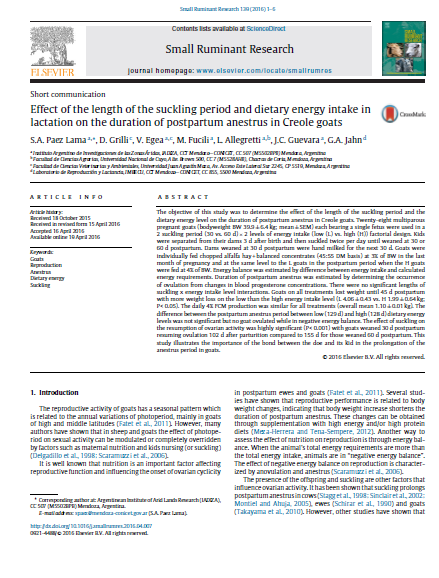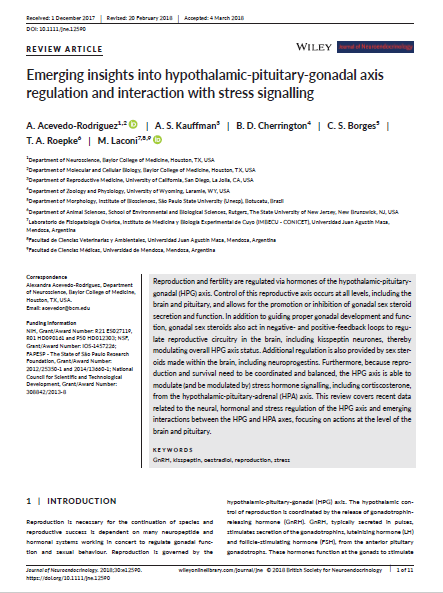Browsing by Subject "Reproduction"
Now showing items 1-2 of 2
-
Effect of the length of the suckling period and dietary energy intake in lactation on the duration of postpartum anestrus in Creole goats.
(Comité editorial Small Ruminant Research, 2016-04-16)The objective of this study was to determine the effect of the length of the suckling period and the dietary energy level on the duration of postpartum anestrus in Creole goats. Twenty-eight multiparous pregnant goats (bodyweight BW 39.9 ± 6.4 kg; mean ± SEM) each bearing a single fetus were used in a 2 suckling period (30 vs. 60 d) × 2 levels of energy intake (low (L) vs. high (H)) factorial design. Kids were separated from their dams 3 d after birth and then suckled twice per day until weaned at 30 or 60 d postpartum. Dams weaned at 30 d postpartum were hand milked for the next 30 d. Goats ... -
Emerging insights into hypothalamic-pituitary- gonadal axis regulation and interaction with stress signalling.
(Comité editorial Journal of Neuroendocrinology, 2018-10-30)Reproduction and fertility are regulated via hormones of the hypothalamic-pituitary-gonadal (HPG) axis. Control of this reproductive axis occurs at all levels, including the brain and pituitary, and allows for the promotion or inhibition of gonadal sex steroid secretion and function. In addition to guiding proper gonadal development and function, gonadal sex steroids also act in negative-and positive-feedback loops to regulate reproductive circuitry in the brain, including kisspeptin neurones, thereby modulating overall HPG axis status. Additional regulation is also provided by sex steroids made ...











